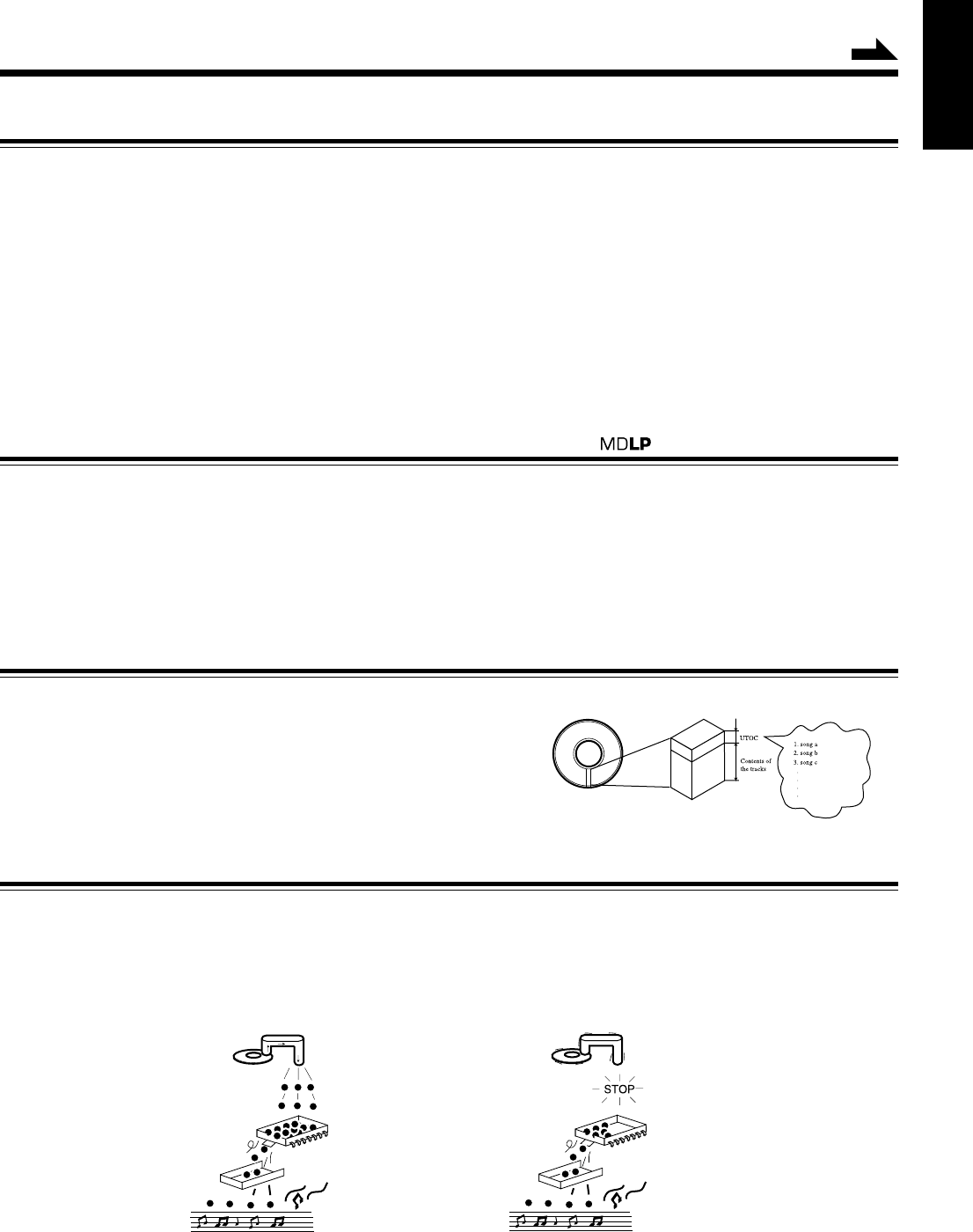
60
English
MD Disc Types
There are two types of MDs: Premastered (prerecorded) and Recordable (blank).
Premastered MDs
Premastered MDs, which have been recorded at music studio, can be played back like regular CDs. On an MD of this type,
data is recorded as the presence or absence of tiny pits. A laser beam focuses on the pits on the surface of the MD and reflects
the detection back to the lens in the MD recorder. The MD recorder then decodes the signals and plays them back as music.
This type of MD is called an “optical disc.”
Recordable MDs
Recordable MDs, which use magneto-optical technology, can be recorded and played back repeatedly. The laser inside the MD
recorder applies heat to the MD, demagnetizing the magnetic layer of the MD for recording and playback. This type of MD is
called a “magnetic-optical disc.”
ATRAC (Adaptive TRansform Acoustic Coding)/ATRAC3 ( )
The MD provides 80 minute recording and playback time, much more than an audio CD, but in a diameter of only 64 mm. This
ability to store such a large amount of data is the result of ATRAC, an audio compression technique developed for MD. This
technology cuts out faint sounds that would not be heard by the human beings. This technology, based on human sensitivity to
sounds, reduces recorded data volume up to about one-fifth of the original data volume.
Furthermore, this unit takes advantage of the latest ATRAC3 techniques, which can reduce the amount of data to record to one-
10th or one-20th of the original data volume. This allows for 2 times or 4 times long-hour stereo recording on this unit.
UTOC (User Table Of Contents)
Found only on recordable MDs, this area contains sub-data (track number, recording data, etc.) which can be rewritten by the
user.
UTOC enables us to search for tracks quickly and edit tracks on the MD.
Sound Skip Guard Memory
The biggest weakness of discs is their susceptibility to vibration. The “Sound Skip Guard Memory” has been developed to
cope with this weakness.
With this function, a few seconds of signals read by the optical read head from the MD are first stored in memory before being
reproduced as audio signals. Thus, even when vibration or shock interrupts signals being read, these stored signals can continue
to reproduce sounds for that few seconds. Thus, the user will enjoy uninterrupted music.
Additional Information
When “vibrated”....Normally....
3:12
4:15
6:05
Continued
EN59-64_UX-J55MD[UB]f.p65 7/1/03, 4:43 PM60


















